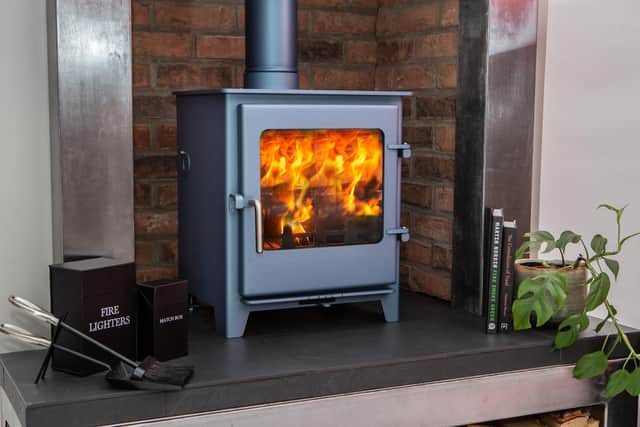Demand for woodburning stoves is rising
Now, the cost is a majorconsideration, which is why many of us are looking for alternatives, with woodburning stoves top of the list.
Town and Country Fires, a renowned family run Yorkshire business, designs and manufactures some of the most energy efficient solid fuel and woodburning stoves in the world at its Pickering headquarters.
Advertisement
Hide AdAdvertisement
Hide AdIt supplies retailers all over the country, while also selling direct to the public from its Pickering showroom.


The business, launched in 1977 by the Thurlow family, who were farmers keen to diversify, hasseen sales rise in the past few months.
Consumer demand is one reason but the other is availability of supply.
While most stoves are now made wholly or partly abroad, Town and Country Fires has kept everything in house and uses British steel.
Advertisement
Hide AdAdvertisement
Hide Ad“Quite a lot of manufacturers are struggling for raw materials and that has had an effect on their production so there is a four to six months wait for the product after ordering.
“We’ve gained sales because we can fulfil orders within a few weeks, rather than months, plus we don’t have the issue of shipping costs.
“We are also finding that more people want to buy British,” says Nina Hodgson, a director of Town and Country Fires.
She adds that other reasons people are investing in a woodburner include fuel security and the fact that wood is from a renewable source, rather than a fossil fuel, while the best wood-burners are now over 80 per cent efficient.
Advertisement
Hide AdAdvertisement
Hide AdQuality is absolutely key when buying a stove as there are now strict rules on emissions.
The government’s Clean Air strategy, which came into force at the beginning of this year, has banned the sale of the most polluting stoves and those that are allowed must now conform to strict new Ecodesign guidelines.This, according to a report commissioned by the Stove Industry Alliance, has seen Ecodesign stoves contribute 2.7 per cent of emissions from indoor burning while open fires contribute 39 per cent, though those campaigning for cleaner air are calling for bans, with Mums for Lungs calling for the sale of new stoves phased out by 2027 and a ban on woodburners, unless the only form of heat, by 2032.
There is no sign that this will happen but there is a ban on using wet wood with a moisture content of over 20 per cent, which can emit harmful particulates, and a certification scheme to ensure wood is dry, preferably kiln dried, and ready to burn is in place.
Those who live in a conservation area may also have to seekpermission to install a stove, so check with the local authority planning office.
Advertisement
Hide AdAdvertisement
Hide AdPrices for stoves range from £600, though the best are from £1,500 upwards. Installation costs will bump this figure up considerably, especially if you need a flue liner or, if there is no chimney, a twin wall flue.
Be mindful also that the cost of wood is rising, partly due to the war in Ukraine. One supplier reports that a crate of wood was £210 a month ago but is now £240 with that price about to rise to £270 imminently.
Learning how to use yourstove to maximise its efficiency is, therefore, more important than ever and this includes which woods to burn and using the vents effectively.
A good supplier and installer will help you with this information but oak, ash hawthorn, apple and cherry have a low moisture content and can be split easily.
Advertisement
Hide AdAdvertisement
Hide AdYou can assess whether a log is dry by the bark, which will come away easily and the log will have splits against the grain.
Ideally, logs should be no more than 10cm thick and any that are will need to be split again to ensure they burn properly.
A stove will also need servicing annually, and your chimney should also be swept once a year.
Yorkshire author Sally Coulthard’s Little Book of BuildingFires, £6.50, published by Anima, is an excellent read for those who have a woodburner or who are considering buying one.
Advertisement
Hide AdAdvertisement
Hide AdIt is an informative read that explores indoor and outdoor fires and covers buying firewood, chopping and splitting wood, how to create the perfect log store, seasoning and stacking logs, plus moisture meters.
Sally also covers smoke and allergies and carbon monoxide and smoke alarms.
She begins her book with aquote from Charles Dickens' Great Expectations: “Give me,” said Joe. “A good book, or a good newspaper, and sit me down afore a good fire and I ask no better.”